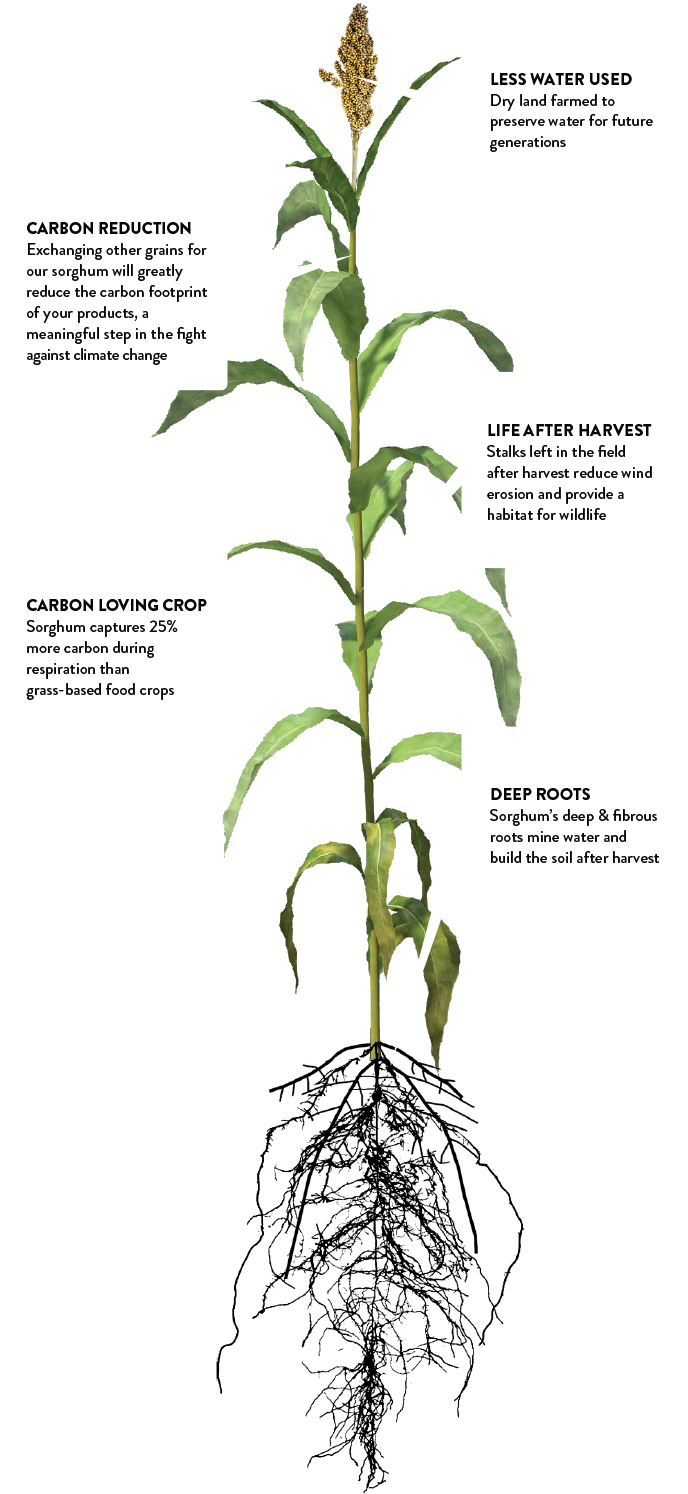Sorghum is a Sustainable Grain

Nu Life Market sorghum has a carbon footprint of -0.21 CO2e per kg.
Carbon Reduction
Exchanging other grains for our sorghum will greatly reduce the carbon footprint of your products, a meaningful step in the fight against climate change.
Carbon Loving Crop
Sorghum captures 25% more carbon during respiration than grass-based food crops.
Preservation
Sorghum can go dormant to tolerate stressful weather conditions.
Less Water Used
While other crops require close to 12 inches of water to produce the first bushel, it only takes six inches of total water (soil, rainfall, and irrigation) to produce the first bushel of grain sorghum. Dry land farming is used to preserve water for future generations.
Water Retention
Smaller leaf pores reduce sorghum’s leaf water loss and waxy leaves hold in moisture during dry conditions.
Water Conservation
Swapping out other grains for sorghum will make a necessary impact on the amount of water used by agriculture, and is a meaningful step towards water security.
Deep Roots
Sorghum’s deep & fibrous root system increases its ability to mine water and build the soil after harvest.
Life After Harvest
Stalks left in the field after harvest reduce wind erosion and provide a habitat for wildlife.
Regenerative Agriculture
Nu Life Market practices regenerative agriculture to preserve natural resources.
- Roots stay in the ground, sequestering carbon in the soil
- Farmers are making a positive impact on the soil health in their fields
- Sorghum travels an average of 49 miles from the field to the processing facility
- Farms showed a 575% reduction in total soil erosion vs the national average


